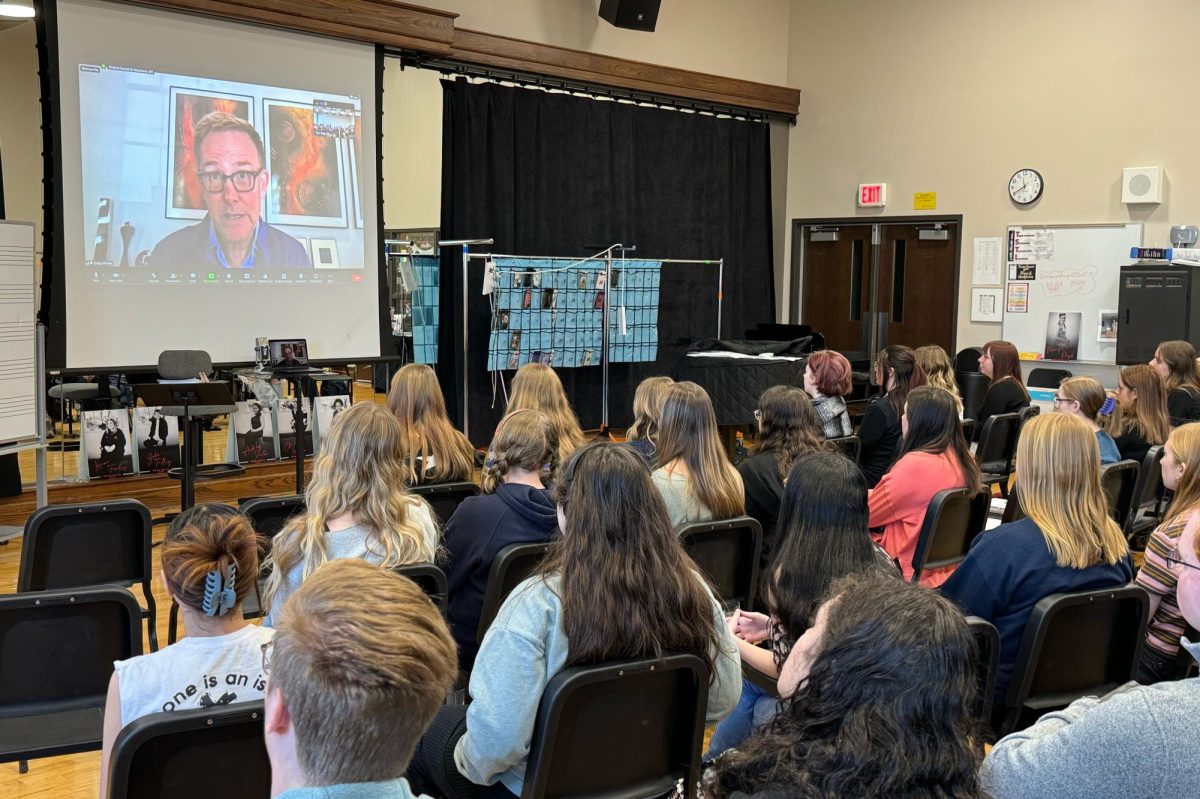Shielding for Society
Art by Haileigh Steffen
May 15, 2020
In the middle of a pandemic, the most important thing to do is to prevent the spread of the disease. While that may seem obvious, there are first several problems which need to be addressed: the people outright denying the existence of the disease; the protests against the “slavery” of social distancing or stay-at-home orders; the refusal of people to participate in social distancing or follow safety recommendations; the list goes on. While one item can’t magically solve all of these problems, there is one that protects both you and the people around you. At this point, it is the most effective way to deter transmission of COVID-19.
Now, you may be wondering what this item is and I think I’ve kept you waiting long enough. It’s a face shield. Even though that seems rather anti-climatic, face shields could prove to be both more effective and more comfortable than regular cloth face masks.
Cloth masks range from being uncomfortable to completely ineffective. The inconsistent shapes of people’s faces cause problems with the fit of the mask. If the mask is too short, it doesn’t adequately cover both the nose and mouth. If the straps to hold them up are too long, the mask slips down. If the straps are too tight, they are uncomfortable.
Don’t get me wrong, masks are better than nothing. However, someone with an ill-fitting mask is much more likely to touch their face because when something is irritating your skin or making it hard for you to breathe, the natural response is to remove the cause of said irritation. Exhibiting an uncontrollable reflex, while in public in the middle of a pandemic can be dangerous. Touching door handles and other surfaces in public areas and then reaching up to adjust your mask gives the virus a direct path into your body.
Face shields, on the other hand, are adjustable. Which increases their effectiveness and their comfort. They also don’t rest directly on the face, but instead, curve around it to both prevent the wearer from receiving and transmitting the disease. They also don’t have bands around the ears or head that may be uncomfortable. In addition, to adjust a face shield, you reach to the back of your head, avoiding your face.
Another problem with normal cloth masks is that they don’t cover your eyes. If you’re wearing a mask, but not walking around with your eyes closed (or wearing a form of eye protection) then the disease is most likely still transmissible. This educated assumption comes from research that showed SARS-CoV-1, the virus responsible for the 2003 SARS outbreak, had an increased risk of transmission through eyes. Given the similarities between outbreaks, it is probable that the same would go for SARS-CoV-2, the virus that causes COVID-19.
Most face shields cover the eyes from ear to ear. They function very similarly to the way goggles do; preventing the transmission of the virus to the eye. Now, once again, I’m not saying that you shouldn’t wear masks. They’re still better than nothing. What I am saying, however, is that I think face shields are more reliable, more comfortable, and ultimately just safer.





















































